- Home
- Alistair Moffat
The Secret History of Here Page 17
The Secret History of Here Read online
Page 17
On this grey, cloudy and cheerless morning, I confess my spirits are low. I fear for the future of my children and grandchildren, and have perhaps only ten years of relative health when I can attempt to achieve something that might help them. But I am by nature an optimist, and when my mood lifts we should think about how to plan for an uncertain time ahead.
28 May
When walking is metronomic, the steady planting of one foot in front of another, thinking but not thinking, it can feel like therapy. This morning I try to walk off my low spirits and, after a couple of yanks of the lead, dragging her away from particularly pungent sniffs, Maidie falls in step. We follow the old track into the Deer Park and I begin to remember the past, stories my mother and my aunts told me.
She and her six sisters walked everywhere. Raised in Hawick and all of them employed in the textile mills when they left school at fourteen, they sought diversion from the thrumming, humdrum rattle and clack of the great looms, the dust and the deafening racket of machinery churning out bolts of tweed, cotton vests, underpants, and lambswool and cashmere jumpers. On summer evenings after supper they walked up the Teviot to its confluence with the Borthwick Water, paddling and guddling along its banks before gloaming gathered. At weekends, make-up on, hair done, cigarettes lit, they walked to dances at village halls, and walked home again through the light summer nights, teasing each other with stories of ghosties and ghouls and jumping when an owl hooted. And perhaps teasing each other about the lads they had danced with.
Every generation before ours walked. Time pressed less. Walking was cheap and, weather aside, under personal control. No one needed to wait for a lift or a bus. They just walked when they wanted to go and arrived when they arrived. With much less traffic on the roads, and often in cheerful company with a great deal to discuss after the dances, the miles flew by. Now we drive, mostly on our own, or are driven. We sit rather than stand. That seems to me to be a sharp shift in cultural habits, perhaps one that is less understood than it should be. Before we drove down our ancient tracks, three or four hundred generations walked them. And they saw, felt, smelled, intuited and experienced the land in a way that we may be losing.
29 May
Streamers of sunlight filter through the morning mist, light the landscape yellow and are then obscured. Grey, yellow, and then grey, like a stagehand rotating a coloured wheel of gels against a lamp. What will the day bring?
Eventually the sun wins the unequal contest and Maidie and I wander out for another brisk old-fashioned walk, instead of the usual halting wander.
I have been thinking a good deal about the dead. John Goodall, my Latin and Greek teacher, died ten days ago and this afternoon I will speak at his funeral. Wanting very much to do him justice, I will learn my lines and I hope I do it properly. He would expect nothing else. ‘Speak up, boy!’
30 May
The wild raspberry canes by the Bottom Track have begun to leaf out and soon the little white flowers will come. It is a warm, damp morning, perfect growing weather, and now that the May trees’ blossom is all out, I can cast my clout of a jacket.
At Windy Gates I stop, my attention caught by the eastern horizon, the high ridge of the Deer Park. Between the familiar trees, I see something that is not right, was not there yesterday. Near the stand of majestic beeches, all their dark foliage burgeoning, there is a strange silhouette. Not one of the saplings we planted, not a post set up by the gas pipeline people who are always pottering about on our land without asking. I can make nothing of it.
And then it moves, turning slowly towards the town, and the man raises an arm. He stands at the highest point of the ridge, where there are the longest vistas in all directions, and waves slowly from side to side, like a signal. Standing still, staring, I feel myself slipping through a crack in time.
In 1513 conflict crackled along the frontier between Scotland and England. The terms of the Auld Alliance were always vague, but they persuaded James IV to attack Henry VIII when he attacked Louis XII of France. A sequence of events was set in train that would end in catastrophe. In the late summer of 1513 the Border towns were set on a war footing. Rescued from the flames outside the Commercial Bank during another war, the Burgh Court Book
ordains that night watches are to be kept by men and not boys; they were to walk on the backlands [behind the town’s houses] within their watch and not go to potation and drink from nine o’clock to cockcrow.
A watch of eighteen men, neighbours and householders, fully armed as best they might, had to walk each night . . . Failure to do so meant a fine of 12 pence.
The southern boundary of the town, part of the route of the Night Watch, is our northern boundary, the edge of the Deer Park. But it is low ground, next to a place still known as the Bog or the Bogheid. The Night Watch will have sent a man to the summit of the Deer Park to stand lookout, perhaps taking turns as they walked their circuit. It is inconceivable that they would not do this.
The Burgh Court Book for Selkirk, also rescued by the Mason brothers, vividly describes rising international tension, as James IV prepared for war with England and began to raise a vast army, the largest ever to march out of Scotland.
2 August, 1513, Finds and ordains all neighbours and indwellers to be armed for war after the tenor of the king’s letters produced at the last wapinschawing [muster] to give their demonstration and show thereof in the Bog before the baillies [town officials] on Wednesday, St Laurence Day [10 August]. And that all indwellers for the weal of the town and country, having servant men and children, that they be produced at wapinschawing in the best way they can with one spear, lance and bow . . . To be fulfilled under the unlaw [fine] of 8 shillings.
Also finds that the neighbours about the hill [perhaps the Deer Park] lend their horse to bring 5 sledful of turf and who has no horse to come himself and give his pains for casting and laying of turf; and that each indweller send on servant betwixt this and Sunday to the lochend and places about the Bog where need is.
They built the turf wall precisely on our boundary. A tumble-down drystane dyke tops it now, but it sits on a narrow, raised ridge and the remains of a shallow ditch can be seen on our side. It is a monument to panic. The wall reaches as far as the edge of the Haining Loch, but in reality it was a flimsy gesture and would not have delayed a determined attack for very long. Mercifully, it was never needed.
On 9 September 1513, James IV lost a battle he should have won and died in the ruck of hand-to-hand fighting. Flodden was a disaster, weakening the Scottish state profoundly and ushering in a century of violence and disorder on both sides of the border.
Perhaps the dog walker I saw greet his friend on the Deer Park ridge knew that he was moving through a rich landscape full of centuries, full of hidden incident. But what is certain is that he sought the highest point so that even on a cloudy morning he could look out over the land. Pleasure and not anxious necessity had taken him to the high vantage point.
Perhaps I think about the past and the dead too often, but yesterday I managed to say some resonant things about my old teacher, John Goodall. He gave me and others many gifts and I was glad to thank him.
31 May
The secret scents of the earth swirled in the morning breeze. After two days of warm rain, growth is everywhere. On either side of the Long Track, the grass parks are now knee-high; on its verges, tall stalks of cow parsley seem to have sprouted overnight, their lacy flowers casting a bitter perfume. Yesterday my neighbour ploughed much of the Tile Field, obliterating the spreading contagion of marsh grass, as the chocolate furrows folded over. The deep loamy smell drifts over the grass parks as the world unfurls its fertility. When the sun comes, the land will glisten.
June
1 June
Early on a bright morning, the cows were lying in wait for the sun. In that strangely swinging gait that suckler cows have, they had plodded up the Long Track from the Doocot Field and lain down on the east-facing slope of Huppanova, where the warmth would first be felt.
As Maidie and I clanked through the metal gate, none moved except to turn their great heads to see that we were no threat. Most of the calves lay beside their mothers and few bothered to look up as we passed.
Out in the East Meadow, I could see three of the Old Boys grazing but could make out no sign of the oldest, Gem. In the middle of their seven-acre field are three stands of tall nettles (which I must knock over soon) but, as we walked down the track to the Deer Park and closer, I thought I could make out a fourth. Black nettles? No. Gem. Like the cows, he was lying with his legs tucked under him, but unlike them his head was also down. Now thirty-one, he is a Very Old Boy, and, having tied Maidie to the fence, I walked over to check on him. His eyes were open but he seemed immobile, stuck. Despite rocking him from side to side at the withers, he would not or could not get up. This is what happened to lovely, elegant, arthritic Murphy in the winter before last. His legs failed him and he never got up again.
Thinking I should have brought my mobile (but are there no places or times now when we might be free of the need or means to communicate?), I rehearsed what I would say to Lindsay. When I turned to walk back to pass the other three horses, they began to follow me, thinking I might have brought bowls of hard feed. And then, thinking the same, Gem got up. Very quickly and easily. Old fraud. Lindsay told me that when he sleeps Gem now snores very loudly. My wife will probably read this, and so I will make no further comment.
2 June
Maps fascinate me because they record history as well as geography. I have four faded old maps of our farm and the land around it, and I sometimes pass a happy hour poring over them, comparing them with each other and the land as it looks now. The youngest is the Ordnance Survey of 1900 and while the oldest is undated it looks as though it was drawn in the late eighteenth century. The detail is humbling; it must have been the work of many hours to plot and mark even individual trees, as well as small ponds, old quarries that are now nothing more than scoops, and tracks that are little more than sheepwalks.
Reflecting the fact that land was wealth and the sole source of food, the Selkirk Protocol Books brim with documents confirming, disputing and denying its ownership. And when the old maps are read with the documents of the sixteenth century at my elbow, patterns emerge, stories unfold.
In the desperate decades after the disaster at Flodden in 1513, Border communities struggled to survive, scratching a meagre living from farms frequently plundered and despoiled by armies, forces of skirmishers and the bands of horse-riding thieves who later acquired a dubious, dark glamour as Border Reivers. In 1536, an entry in the Protocol Books outlined the boundaries of Selkirk’s South Common. It was vast, perhaps five thousand acres, and it included the Deer Park as well as all of the other grass parks and paddocks on our farm.
But its bounds were difficult to maintain and police. Surrounding lairds were constantly encroaching, shifting dykes, attempting to assert ownership by cultivating large parts of the ancient common and initiating expensive court cases to back their spurious claims. It was during one of these disputes that Provost John Muthag and Baillie James Keyne were ambushed and murdered on their way to plead at the Court of Session in Edinburgh.
At its zenith, the Selkirk Common had once extended over a huge area, approximately eleven thousand acres to the north and south of the town. By 1517, only two years after Flodden, the burgesses had decided to ride around the marches of their land, the beginning of an immense tradition. But by the middle of the sixteenth century, the town’s ownership had slackened dramatically. Rather than struggling to hang on to such a vast acreage, much of which the townspeople could never work or use, the burgesses were granted a thousand acres by James V. They could cultivate it or lease parts of it. The small common was divided into three farms: Linglie in the north, and South Common and Smedheugh in the south. On my oldest map these boundaries are clear, and they are still visible in the landscape.
Sadly, our farm had slipped out of Selkirk’s ownership and the boundary of our long East Meadow is marked by a crumbling, lichen-covered dyke (so tumbledown that I have had to have a fence erected in front of it) and on the eastern side the fields of South Common begin. Our land had become the property of the Scotts of the Haining and our story becomes bound up with theirs for almost four centuries.
But memories are long, and next week Selkirk will ride around the marches of its old common to the north of the town to make sure that no dykes have been moved, no lairds have encroached and Selkirk’s ancient rights to its land remain.
3 June
Silent witnesses in the landscape, dormant, budding, shedding leaves through hundreds of years, hardwood trees live much longer than men or women, often outlasting buildings, sometimes dominating a skyline. When the burgesses of Selkirk and their supporters rode the marches of their common, they sometimes deliberately marked old trees that stood on the margins of the town’s land, scoring their bark, using them as boundary markers.
On my old maps, individual trees are often plotted with great precision. The earliest map, probably dating from the 1790s, shows only the southern slopes of the Deer Park, but it marks two hardwood trees and surrounds them with what might be gorse. Two hundred and thirty years later, they are still there, clinging fast to the limestone, their roots finding cracks and fissures below the thin soil. They are ash trees and long-lived for their species, but very close to the end of their span. In last summer’s devastating storms, the westernmost ash broke in half, losing much of its upper trunk and top canopy. When I looked at the heartwood, it was black, rotten, having been attacked by a fungus of some kind. This summer I will log the wreckage but leave what is still upstanding. The lower trunk and the main limbs are still alive and now in leaf. It presents no danger, so I won’t fell it. The old tree can take its own time to die.
All of the old maps show what must have been a glorious avenue of hardwoods on either side of the Long Track. Again there is precision, with the mapmaker plotting twenty-two on the eastern side and twenty-four on the west. The Ordnance Survey of 1961 to 1981 marks some as still standing, but the farmer who sold us our land cut them all down about thirty years ago before he left, grubbing up the stumps to maximise his acreage, destroying something much more valuable and beautiful. There is one dogged survivor, a sycamore that grows in the verge of the track. It has been hacked at several times but always comes back. I call it the Life Force. Sycamores can live for two hundred and fifty years and the two survivors in the Top Wood are certainly ancient, perhaps part of the original planting. They are much scarred by storms but majestic, defiant.
The Ordnance Survey of 1900 shows all of our farm and the Deer Park as policies, a managed, even manicured landscape around the Georgian mansion house at the Haining. The sole purpose of policies was to give pleasure, create eye-filling vistas and also keep the rude mechanicals who worked the land for a living at a discreet distance. Horses or even decorative, shaggy Highland cattle grazed the policies to keep the grass manageable. What are now productive parks were dotted with many individual trees and several stands, and patterned with tracks that were used as carriage drives, routes for an afternoon excursion for the ladies and gentlemen of the big house in fine weather. It is all very different now. The rude mechanicals have taken over.
4 June
On the south-facing wall of the second floor of the farmhouse are three large windows that look out over a panorama of the Tile Field and enough of the sky to allow a quick judgement on the weather as I walk past. But this morning I stopped for a longer look. In order to stem the tide of marsh grass, our neighbour first dug several deep pits where the ponding of rainwater, even in dry spells, had given away trouble underground, the location of broken drains. He told me that in the thick clay some had sunk four feet down and were hard to find. Yesterday he ploughed up the parts of the field covered in marsh grass, and lit by a slanting, dawning sun, the chocolate furrows and the lime green of the unaffected acres was a stunning contrast, so sensual I felt I could taste it. Like
the purple young leaves and the green buds of the acer by the stable yard, here were two colours found together in nature that would adorn the palette of a weaver or a fashion designer.
Today he is harrowing the furrows and making a seed bed for new grass. To suppress the regrowth of the marsh spikes, he will want it to establish quickly and, with the rain forecast for the week, we should see a first, faint flush soon. One of the reasons we have so little of this horrible, useless stuff is that all of our pasture is now well established. None of our paddocks have had a plough through them for twenty years and in the Deer Park probably not since the Napoleonic period of the early nineteenth century. With a liberal mixture of some weeds, herbs and wild-flowers, the old meadow pasture has what farmers call ‘a mattress’ under its top growth, a good hold on the soil gained after many years of non-disturbance. And it is in my view the best sort of pasture. The mixed content gives our horses very high quality fodder and a strong dose of health-preserving herbs and vitamins. Perhaps that is one reason why Gem and the Old Boys are living so long.
Around the time of the disputes over the Selkirk Common, farming was changing. The need to rotate crops was increasingly recognised, as was the need to shift animals around to get the fertilising benefit of their muck. This later led to a demand for quick-growing sown grasses that could also be taken as a hay crop. Not all grass is the same, or, on closer examination, looks the same. Most of the new, quick-growing seeds were a mixture of cocksfoot, a pasture grass that develops purplish spikelets when left to grow tall enough to be cut for hay. Timothy is named after Timothy Hanson, an American farmer who developed it in South Carolina in the 1720s. It is also known as Meadow Cat’s Tail and its flowerheads are very easily recognised, pale grey, shading to beige. Ryegrass is thicker bladed and found on lawns and cricket pitches, while clover is technically classed as leguminous or vegetable-like. Sweet vernal grass is often mixed with ryegrass and it is the variety that gives off the glorious smell of new-mown hay. Timothy seems to grow best with us in our clayish soil, but up on the Deer Park I have found clumps of all of the new grasses of the early eighteenth century clinging on to the limestone-enriched soil. We have not let the park for some years, and it desperately needs to be grazed to keep it manageable. But first we need about a mile of new fencing, and that will break the bank.

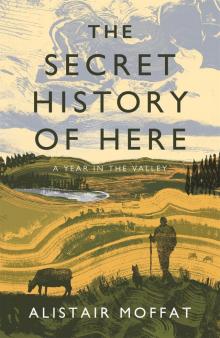 The Secret History of Here
The Secret History of Here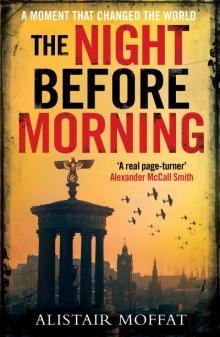 The Night Before Morning
The Night Before Morning To the Island of Tides
To the Island of Tides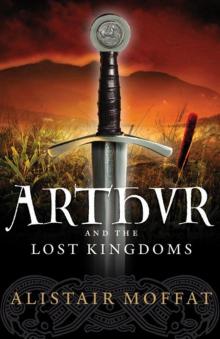 Arthur and the Lost Kingdoms
Arthur and the Lost Kingdoms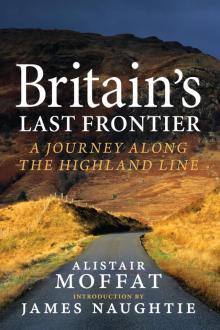 Britain’s Last Frontier
Britain’s Last Frontier The Faded Map: The Lost Kingdoms of Scotland
The Faded Map: The Lost Kingdoms of Scotland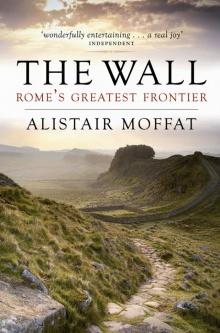 The Wall
The Wall